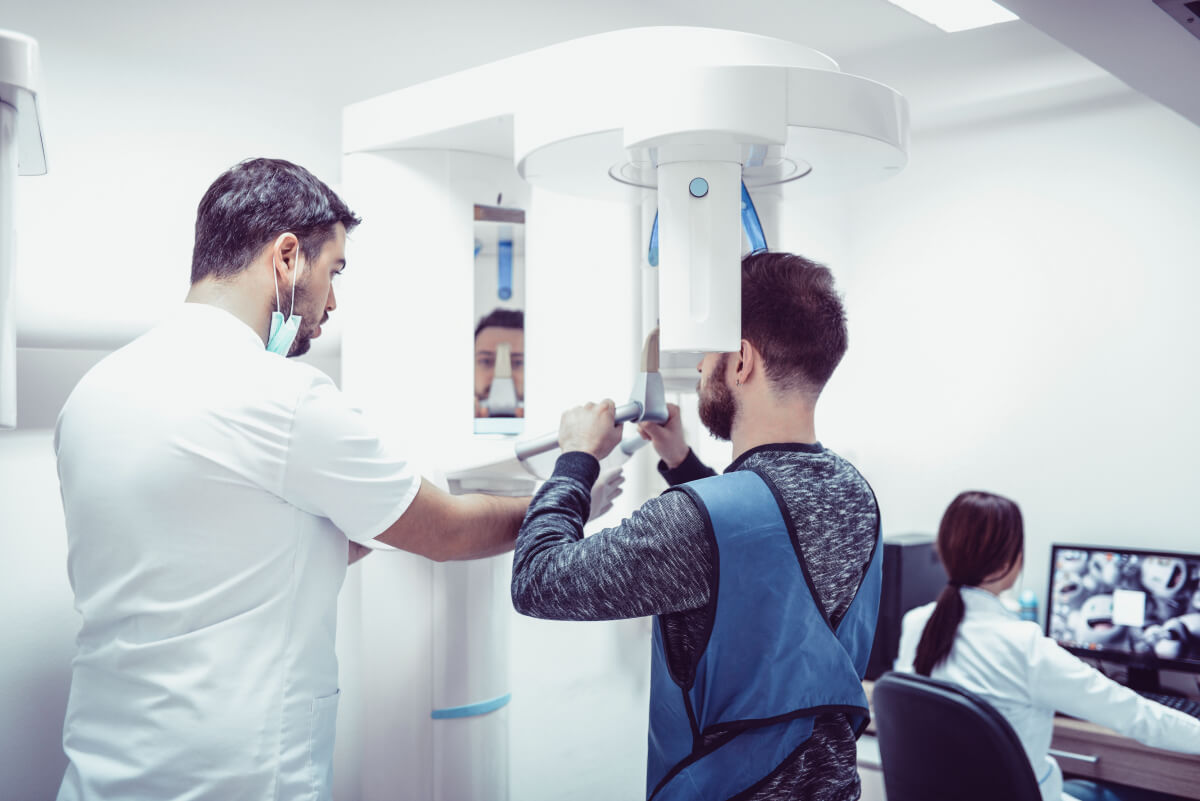January 4, 2023

Dentistry has been revolutionized by digital x-rays, which have several advantages over older film-based x-rays. We are going to discover how these cutting-edge imaging methods function, what advantages they provide, and why they have evolved into crucial tools in modern dentistry offices.
This manual will provide you with useful insights into the intriguing world of digital x-rays, whether you’re a patient looking for information or a dental expert hoping to expand your knowledge.
What are Digital X-rays?
To get precise pictures of the teeth, jawbone, and adjacent oral tissues, dentists rely on digital x-rays, sometimes referred to as digital radiography. They help dentists diagnose dental problems, evaluate oral health, and develop effective treatment plans.
Digital x-rays near you, as opposed to conventional x-rays, employ electronic sensors to collect pictures that are subsequently shown on a computer screen. To take the image, a sensor or a tiny digital gadget is inserted inside the mouth. The dentist may see and evaluate the results once the sensor sends the picture to a computer, where it is immediately displayed.
How Do Digital X-rays Work?
Pictures of the teeth, jawbone, and adjacent oral tissues are taken using electronic sensors. A detailed description of how digital x-rays operate is provided below:
- Preparation: In order to shield other body areas from radiation exposure, the patient might be required to put on a lead apron prior to the x-ray. The x-ray sensor or digital gadget will be placed in the patient’s mouth by the dentist or dental technician.
- X-ray Exposure: A tiny x-ray beam is pointed at the region of interest from the x-ray machine, which is placed close to the patient’s mouth. The beam travels through the oral tissues and teeth, where part of it is absorbed or dispersed.
- Image Capture: The picture is captured by an electronic sensor or digital gadget in the mouth. The sensor is linked to a computer, and the system receives the recorded image right away. The patient experiences a rapid and comfortable process.
- Image processing: Following the capturing of the picture, the image is shown on the computer monitor. To improve the visibility of particular regions, the dentist or dental professional might modify the picture settings, like brightness, contrast, and zooming.
- Image Analysis: To evaluate the health of the teeth, jawbone, and surrounding structures, the dentist examines the digital x-ray image. They search for indications of infections, bone anomalies, tooth decay, gum disease, and other oral health problems.
- Diagnosis and Treatment Planning: The dentist in Winnipeg establishes a diagnosis and creates a suitable treatment plan based on the knowledge obtained from the digital picture. In order to explain the problem and suggest treatments, they might go through the findings with the patient while displaying the digital x-ray image on the computer screen.
Benefits of Digital X-rays
The advantages of digital x-rays in Winnipeg are:
- Reduced radiation exposure: They emit less radiation, ensuring patient safety.
- Immediate image availability: Images are instantly available on a computer screen, speeding up diagnosis and treatment planning.
- Enhanced image quality: Clear and detailed images are provided, allowing for better visualization and accurate diagnosis.
- Efficient workflow: Digital x-rays eliminate the need for film processing, saving time and improving practice efficiency.
- Easy storage and retrieval: Images can be electronically stored and easily accessed for long-term archiving and retrieval of patient records.
- Sharing and collaboration: It is easy to share these images with specialists and other dental professionals, facilitating collaboration and communication.
- Environmental friendliness: Digital x-rays reduce the use of film processing chemicals and waste, making them a greener option for dental practices.
Why Do I Need a Digital X-ray?
Digital x-rays near you are essential in dentistry for:
- Accurate diagnosis and detection of oral issues.
- Early identification of dental problems for timely intervention.
- Treatment planning tailored to individual needs.
- Monitoring treatment progress and making necessary adjustments.
- Educating patients about their oral health conditions.
- Preventive care by identifying potential problems in advance.
- Facilitating communication and collaboration among healthcare professionals.
Visit Polo Park Dental
In conclusion, digital x-rays have transformed dentistry by offering several advantages over traditional film-based techniques. They provide a process that is effective, quick picture availability, improved image quality, and less radiation exposure.
This technology is extremely important for accurate diagnosis, treatment planning, and preventative care because of the precision and diagnostic capabilities they provide. Knowing the benefits of digital x-rays as a patient enables you to make wise decisions about your oral health and receive the best possible care.
 1440 Jack Blick Ave #104, Winnipeg, MB R3G 0L4, Canada
1440 Jack Blick Ave #104, Winnipeg, MB R3G 0L4, Canada 204-774-2521
204-774-2521


